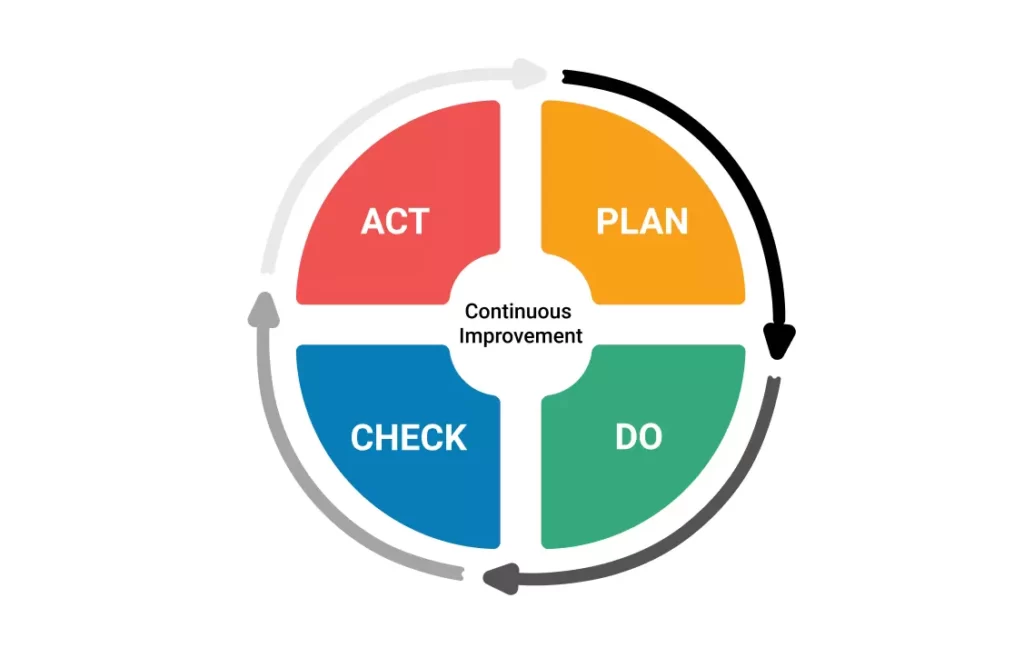Understanding Environmental Management Systems (EMS): Benefits and Best Practices
Environmental management is an important aspect of sustainable development. Organizations that are committed to minimizing their environmental impact can benefit from implementing an Environmental Management System (EMS) that meets international standards. The most widely recognized standard for EMS is the International Organization for Standardization (ISO) 14001. However, another standard that is gaining popularity is the European Standard EN ISO 14001:2015, which is essentially the same as ISO 14001 but with some additional requirements specific to European Union (EU) regulations.

EN ISO 14001:2015 is an environmental management standard that provides a framework for organizations to manage their environmental impact. The standard was developed by the European Committee for Standardization (CEN) and was published in 2015. It is a revision of the previous standard, EN ISO 14001:2004, and is designed to be more compatible with other management system standards, such as ISO 9001 (Quality Management) and ISO 45001 (Occupational Health and Safety Management).
Key features of EN ISO 14001:2015
EN ISO 14001:2015 has the same basic structure as ISO 14001, which includes the Plan-Do-Check-Act (PDCA) cycle. The standard has ten clauses, which are organized into four main sections:
1.0 Context of the organization: This section requires organizations to identify the internal and external issues that can affect their environmental management system and their ability to achieve their environmental objectives.
2.0 Leadership: This section requires top management to demonstrate their commitment to the environmental management system, to establish an environmental policy, and to provide the necessary resources and support to implement and maintain the system.
3.0 Planning: This section requires organizations to identify their environmental aspects and impacts, to establish environmental objectives and targets, and to develop a plan to achieve them.
4.0 Support: This section requires organizations to provide the necessary resources, competence, awareness, and communication to implement and maintain the environmental management system.
5.0 Operation: This section requires organizations to implement their environmental management system, to monitor and measure their environmental performance, and to take corrective and preventive actions.
6.0 Performance evaluation: This section requires organizations to monitor and measure the effectiveness of their environmental management system, to conduct internal audits, and to review their environmental performance.
7.0 Improvement: This section requires organizations to continually improve their environmental management system, to take advantage of opportunities for improvement, and to respond to non-conformities.
Benefits of implementing EN ISO 14001:2015
Implementing EN ISO 14001:2015 can provide a number of benefits for organizations, including:
Improved environmental performance
EN ISO 14001:2015 provides a framework for organizations to identify their environmental impacts, establish environmental objectives and targets, and develop a plan to achieve them. By implementing the standard, organizations can improve their environmental performance and reduce their environmental impact.
Legal compliance
EN ISO 14001:2015 requires organizations to comply with relevant environmental regulations and legislation. By implementing the standard, organizations can ensure that they are meeting their legal obligations and reduce the risk of fines or penalties.
Competitive advantage
EN ISO 14001:2015 certification can provide a competitive advantage for organizations. Customers are increasingly looking for products and services that are environmentally friendly, and certification can help organizations to demonstrate their commitment to environmental management.
Reduced costs
Implementing EN ISO 14001:2015 can help organizations to identify opportunities to reduce waste, conserve energy and water, and reduce their overall environmental impact. This can lead to cost savings through reduced resource consumption and improved efficiency.
Improved stakeholder relations
EN ISO 14001:2015 requires organizations to communicate with their stakeholders, including employees, customers, and the wider community. By implementing the standard, organizations can improve their stakeholder relations and demonstrate their commitment to environmental sustainability.
How to implement EN ISO 14001:2015
Implementing EN ISO 14001:2015 requires a systematic approach that involves the following steps:
Establishing a management system
The first step is to establish an environmental management system that meets the requirements of EN ISO 14001:2015. This involves identifying the scope of the system, appointing a management representative, and developing an environmental policy.
Identifying environmental aspects and impacts
The next step is to identify the environmental aspects and impacts of the organization’s activities, products, and services. This involves assessing the environmental impact of each aspect and prioritizing them based on their significance.
Setting environmental objectives and targets
Once the environmental aspects and impacts have been identified, the organization should set environmental objectives and targets that are consistent with its environmental policy. These objectives and targets should be measurable and should reflect the organization’s commitment to continual improvement.
Developing an environmental management program
The environmental management program is a detailed plan that outlines how the organization will achieve its environmental objectives and targets. This plan should include the actions that will be taken, the resources required, and the timelines for implementation.
Implementing and monitoring the system
The environmental management system should be implemented and monitored to ensure that it is effective in achieving the organization’s environmental objectives and targets. This involves providing the necessary resources, training, and communication to employees, and establishing procedures for monitoring and measuring environmental performance.
Conducting internal audits
Internal audits should be conducted regularly to assess the effectiveness of the environmental management system and to identify opportunities for improvement. The audit should be conducted by trained personnel who are independent of the area being audited.
Continual improvement
EN ISO 14001:2015 (1) requires organizations to continually improve their environmental management system. This involves monitoring performance, identifying opportunities for improvement, and implementing corrective and preventive actions.
Conclusion
EN ISO 14001:2015 is a standard for environmental management that provides a framework for organizations to manage their environmental impact. By implementing the standard, organizations can improve their environmental performance, reduce their environmental impact, and demonstrate their commitment to environmental sustainability. The standard also provides a competitive advantage for organizations and can lead to cost savings through improved efficiency. Implementing EN ISO 14001:2015 requires a systematic approach that involves establishing a management system, identifying environmental aspects and impacts, setting environmental objectives and targets, developing an environmental management program, implementing and monitoring the system, conducting internal audits, and continually improving the system.


